The Creative Unconscious
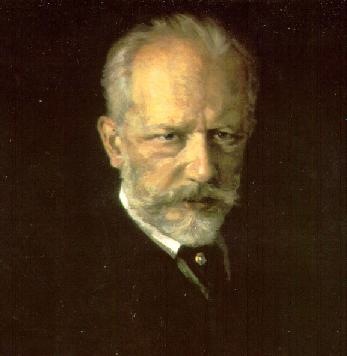
“Sometimes I observe with curiosity that uninterrupted activity which, independent of the subject of any conversation I may be carrying on, continues its course in that department of my brain that is devoted to music.”
–Peter Ilich Tchaikovsky (Russian Composer, 1840-1893)
Jazz and the Brain
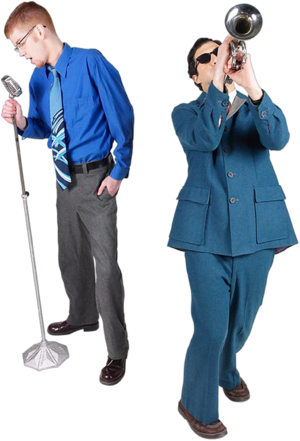
It is remarkable how good the brain is at coordinating multiple regions at once. A new study published in today’s issue of the journal Public Library of Science (PLoS) One has used functional magnetic resonance scanning (fMRI) to examine musicians engaged in highly creative and spontaneous jazz improvisation. They found that a large region of the brain involved in monitoring one’s performance is shut down, while a small region involved in organizing self-initiated thoughts and behaviors is highly activated. The researchers propose that this and several related patterns are likely to be key indicators of a brain that is engaged in highly creative thought.
During the study, six highly trained jazz musicians played keyboard under two conditions. In the first scenario, called the Scale paradigm, the music was based on a simple C major scale. Using only their right hand, the volunteers first played the scale up and down in quarter notes. Next, they were asked to improvise, though they were limited to playing quarter notes within the C major scale.
The second scenario, called the Jazz paradigm, examined higher-level musical improvisation. This paradigm was based on a novel blues melody that the volunteers had memorized beforehand, and had been written by one of the researchers. Again, using only their right hand, the musicians played the tune exactly as they had memorized it, only this time accompanied through headphones by a pre-recorded jazz quartet. When they were asked to improvise, the musicians listened to the same audio background, but they were free to spontaneously play whatever notes they wished.
The brain scans were nearly identical for the low-level and high-level forms of improvisation, supporting the idea that the change in neural activity was due to creativity and not the complexity of the task.
Much of the change between improvisation and memorization occurred in the prefrontal cortex, the region of the frontal lobe of the brain that helps us think and problem-solve. It is also involved in generating the sense of self. The dorsolateral prefrontal cortex is responsible for monitoring our own performance and it shuts down completely during improvisation, while the much smaller, centrally located region at the foremost part of the brain – the medial prefrontal cortex – increases in activity. The medial prefrontal cortex is believed to be involved in self-initiated thoughts and behaviors, and it becomes very active when a person describes an event that has happened to him or makes up a story.
The suppression of inhibitory, self-monitoring brain mechanisms helps to promote the free flow of novel ideas and impulses. This is an unusual pattern of brain activity that closely resembles the pattern seen in people when they are dreaming.
Another unusual finding was that there was increased neural activity in each of the sensory areas during improvisation, including those responsible for touch, hearing and vision, despite the fact that there were no significant differences in what individuals were hearing, touching and seeing during both memorized and improvised conditions. This suggests that when the brain wants to be creative, a whole range of sensorimotor processing is increased. At the same time systems that regulate emotion were also engaged during improvisation.
As someone who has done a lot of brain imaging, and has spent many hours inside scanners, this whole piece of work is dazzling from a technical point of view. The hardy musicians had to lie on their backs with their heads and torsos inside the scanner and their knees bent upward. They had to use a plastic keyboard, which was shortened to fit inside the scanner and which rested on their knees. A mirror placed over the volunteers’ eyes, together with the headphones, helped the musicians see and hear what they were playing.
Just thinking about it makes me queasy.
“Words are the children of reason and, therefore, can’t explain it. They really can’t translate feeling because they’re not part of it. That’s why it bugs me when people try to analyze jazz as an intellectual theorem. It’s not. It’s feeling.”
–Bill Evans (American Jazz Pianist, 1929-1980)
“Jazz tickles your muscles, symphonies stretch your soul.”
–Paul Whiteman (American Musician and Bandleader, called the King of Jazz for popularizing a musical style that helped to introduce jazz to mainstream audiences during the 1920s and 1930s, 1890-1967)
“Jazz music is an intensified feeling of nonchalance.”
–Françoise Sagan (French Novelist and Dramatist, 1935-2004)
Music, Language and the Brain
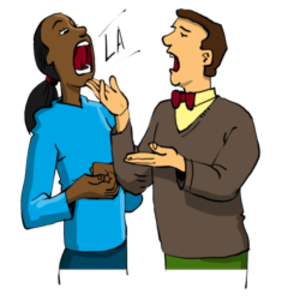
For more than two centuries neurologists and others interested in music and language have wondered whether or not language and music depend on common processes in the mind. It has been known that some aspects of language and music are represented in different regions of the brain, but there are also many areas of crossover.
Now, researchers at Georgetown University Medical Center have published evidence in the journal NeuroImage, that the processing of music and language do indeed depend on some of the same brain systems.
Their findings suggest that two different aspects of both music and language depend on the same two memory systems in the brain. One brain system, based in the temporal lobes, helps us to memorize information in both language and music, for example words and meanings in language and familiar melodies in music. The other memory system is focused in the frontal lobes, and this one helps us to learn “unconsciously” and use the rules that underlie both language and music, such as the rules of syntax in sentences, and the rules of harmony in music.
The study involved 64 adults and the researchers used a technique called event-related potentials, in which they measured the brain’s electrical activity using electrodes placed on the scalp.
The subjects listened to 180 snippets of melodies. Half of the melodies were segments from tunes that most participants would know, such as “Three Blind Mice” and “Twinkle, Twinkle Little Star.” The other half included novel tunes composed by one of the researchers. Three versions of each well-known and novel melody were created: melodies containing an in-key deviant note that could only be detected if the melody was familiar, and therefore memorized; melodies that contained an out-of-key deviant note that violated rules of harmony; the original melodies that acted as the “controls”
They found that violations of rules and memory in music corresponded to the two patterns of brain waves seen in previous studies of rule and memory violations in language. In-key violations of familiar melodies led to a brain-wave pattern similar to one called an “N400” that has previously been found with violations of words. One example that the authors gave: :I’ll have my coffee with milk and concrete.” Out-of-key violations of both familiar and novel melodies generated electrical activity over the frontal lobe similar to the patterns previously found for violations of rules in both language and music. Out-of-key violations of familiar melodies also led to an N400-like pattern of brain activity, as expected because these are violations of memory as well as rules.
This research opens up new ways of thinking about the relationships between language and music, and may have implications for speech and language therapy.
“When I hear music, I fear no danger. I am invulnerable. I see no foe. I am related to the earliest times, and to the latest.”
–Henry David Thoreau (American Essayist and Philosopher, 1817-1862)
“There is nothing better than music as a means for uplifting the soul.”
–Hazrat Inayat Khan (Founder of the Sufi Order of the West, 1882-1927)
“There are more love songs than anything else. If songs could make you do something we’d all love one another.”
–Frank Zappa (American Composer, Guitarist, Satirist and Song Writer, 1940-1993)
“Since music is a language with some meaning at least for the immense majority of mankind, although only a tiny minority of people are capable of formulating a meaning in it, and since it is the only language with the contradictory attributes of being at once intelligible and untranslatable, the musical creator is a being comparable to the gods, and music itself the supreme mystery of the science of man, a mystery that all the various disciplines come up against and which holds the key to their progress.”
–Claude Lévi-Strauss (Belgian-born French Social Anthropologist, 1908-)
Close Your Eyes and I’ll…
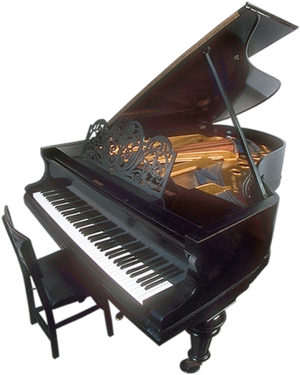
Every young neuroscience student learns about a classic experiment that was published in 1956 by Raul Hernandez-Peon, in which he had an electrode in the acoustic nerve of a cat, while a metronome was ticking. Every tick caused a pulse of electricity in the nerve. But as soon as the cat saw or smelled a mouse, the electrical activity plummeted: now all of his attention was on lunch, and his brain damped down the unnecessary ticking of the metronome. Something similar happens with the “Cocktail Party Phenomenon:” our ability to focus our listening attention on a single talker and ignoring other conversations that are going on.
A study by researchers from Wake Forest University Baptist Medical Center and the University of North Carolina was presented at the Society for Neuroscience conference in San Diego this week, suggesting that our brains can turn down our ability to see, so that we are better able to listen and focus on music and complex sounds.
The research used functional Magnetic Resonance Imaging in 20 non-musicians and 20 musical conductors aged 28-40, and found that both groups diverted brain activity away from visual areas during listening tasks. The activity fell in the visual regions areas as it rose in auditory ones. But during harder tasks the changes were less marked for conductors than for non-musicians.
While being scanned the subjects were asked to listen to two different musical tones played a few thousandths of a second apart and identify which was played first. The task was made harder for the professional musicians than for the non-musicians, to allow for the differences in their background.
As the task was made progressively more difficult, the non-musicians carried on diverting more and more activity away from the visual parts of the brain to the auditory, as they struggled to concentrate on the music. However, the conductors did not suppress their brains, suggesting that their years of training had given them an advantage in the way that their brains were organized and functioning. They are less likely to be distracted and are highly tuned to musical sounds.
This is like closing your eyes to listen to music and the advantage of the trained musicians is similar to the advantage that we see in the brain of the chess master compared with the amateur. Years of study and practice enable the chess player to move without much conscious thought.
It shows how well we are able to divert activity from one part of the brain to another as needed. It is that ability to be flexible and to recruit more brain when we need it that lies at the heart of the neurocognitive revolution that is changing the way that we think about the brain and mind.
Integrated Medicine with Heart Surgery

The movement to treat the whole person is a lot more developed in Europe than tit is in the United States. So it is always gratifying to see research on integrated medicine on this side of the pond. Even if there are critics who call anything holistic “woo woo,” the fact is that patients like the approach, and there is a developing research base.
A new study from the Mayo Clinic indicates that massage therapy decreases pain levels for patients after heart surgery. During a five-month period in 2005, 58 patients undergoing surgery participated in a pilot study to examine the effect of massage on pain after surgery. Of the 30 who received massage, the mean pain scores were less than 1 on a scale of 1 to 10, with 10 as the most painful.
Before the massage therapy, these patients rated their pain at an average of 3 on a 10-point scale. In the control group of 28, pain levels remained the same over the same period, according to findings published in the current issue of Complementary Therapies in Clinical Practice.
As a result of the pilot study, Mayo now has a full-time massage therapist available for patients after heart surgery, and a larger, randomized study is under way.
The reason for the study was that patients often report that tension, stress, pain and anxiety get in the way of their recovery after cardiac surgery. Therefore apart from massage, the researchers are also exploring the use of stress management, music therapy and guided imagery as adjuncts to the best of modern medicine.
This makes good sense, and I shall keep you posted as more information is published.
Non-pharmacological and Lifestyle Approaches to Attention-Deficit/Hyperactivity Disorder: 5. Exercise, Environment and Sleep
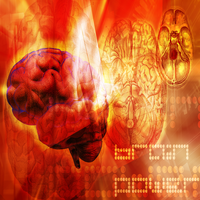
One of the most valuable things to do to help children or adults with ADHD is to help them to structure their time.
All the approaches that we have already discussed, from medications to diets, herbs and homeopathy are all tools designed to help people get to the point where they can create, accept and maintain more structure in their lives. Exercise, the environment and regular sleep are all essential contributors.
Exercise
Aerobic exercise may be particularly helpful for people who also have a mood disorder or anxiety probably by reducing inflammatory mediators in the blood.
There is a movement therapy called eurythmy that was developed by Rudolf Steiner. It is quite popular in central Europe, and there has been a report that it could help children with ADHD.
Environment
There is evidence that children with ADHD do better if they are outside, and even being a green room seems to help them.
There are plenty of anecdotes about children and some adults with ADHD improving if they have classical or New Age music in the background. Paradoxically some like and claim benefit from “heavy metal.” There is recent evidence from New Zealand indicating that music therapy may contribute to the reduction of a range of ADHD symptoms in adolescents, as it does in younger children. With the advent of the iPod, it is easy to make a playlist of music that helps attention and concentration.
The data on the effect of watching television, computer time or playing video games is a mixed bag. There are people who say that children under the age of three should not watch television at all, and the American Academy of Pediatrics recommends that children under the age of 2 years should watch no television, and that television time should be limited to less than 2 hours daily in older children. The research data has not produced a clear answer one way or the other. Some of the most recent research does suggest a link between the amount of time that children spend
watching television and attention-deficit/hyperactivity disorder, but
it remains unclear as to whether elevated levels of television viewing
are the cause or result of ADHD symptoms. Other researchers have failed to find a connection. The best thing is to play safe and to keep television viewing to a minimum: there are so many other things for a child to be doing.
There have been questions about whether other environmental factors, particularly lead, mold and Candida could cause ADHD.
Lead toxicity is well-known to cause neurological problems, but studies of a link between lead levels and ADHD have usually failed to find a link, and in a study in which children with minimally elevated lead levels were given a drug – penicillamine – to remove lead, there was no change in ADHD rating scores. So it is unlikely that lead is a factor in most children.
Because of the high rates of allergies in people with ADHD, there have been attempts to see if mold or other environmental pollutants could be causing ADHD. So far the data has drawn a blank.
Another environmental factor that has been look at is the yeast Candida albicans. It can produce nasty infections in people with compromised immune systems. But in addition, some people have claimed that Candida infections can cause an array of medical problems, including ADHD-like symptoms. People who are thought to have Candida have been treated with diets as well as the antifungal agent nystatin, with mixed results. It would be good to do a formal study of Candida in ADHD and see if there is a link and if treatment helps. So far we just do not have one.
Sleep
Sleep disturbances are extremely common in ADHD. They often get better once an individual is treated, but it is still a good idea to practice good sleep hygiene.
- Stress management
- Exercise a couple of hours before retiring
- Keeping mentally stimulated until it is time for bed
- Though we want to have a regular bedtime and bedtime ritual, to begin with don’t go to bed until you are tired
- No caffeine, alcohol or nicotine after 6pm. (Preferably, of course, no nicotine ever!!) {Remember that many over the counter painkillers contain caffeine, as does chocolate}
- Try to keep the bedroom atmosphere relaxing, and establish a sleep ritual
- Keep the room quiet and dark
- If you like aromatherapy, lavender and chamomile are usually best
- If you cannot sleep, get up and do something relaxing: struggling to go to sleep is virtually impossible.
- Do not have a television in the bedroom. Bedrooms should be reserved only for sleep in children and for one other activity in adults
- Always get up at the same time in the morning, to try and re-set your brain, and as soon as you get up, be exposed to as much bright light as possible
Heavy Metal and Clever Teenagers
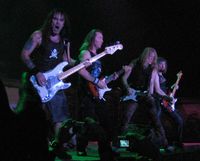
You humble reporter loves music: anything from Mozart to Metallica.
She Who Must Be Obeyed is one of many people who has wondered at my enthusiasm for bands like Iron Maiden and Metallica. Was I, perhaps, dropped on my head as a child?
I was gratified to see a report of a study that was presented at a recent meeting of the British Psychological Society in York, indicating that intelligent teenagers often listen to heavy metal music to cope with the pressures associated with being talented.
Though sadly your humble reporter is no longer a teenager, the seeds of his enthusiasm for this kind of music were sown many years ago.
Stuart Cadwallader and Professor Jim Campbell of The National Academy for Gifted and Talented Youth at the University of Warwick looked at 1,057 students
aged between 11 and 18 years old who completed a survey asking them
about family, school attitudes, leisure time pursuits and media
preferences. They also asked them to rank favored genres of music.
They found that rock was the most popular form of music, closely followed by pop.
Researchers found that, far from being a sign of delinquency and poor academic ability, many adolescent “metalheads” are extremely bright and often use the music to help them deal with the stresses and strains of being gifted social outsiders.
Stuart Cadwallader has this to say,
“There is a perception of gifted and talented students as being into classical music and spending a lot of time reading. I think that is an inaccurate stereotype. There is literature that links heavy metal to poor academic performance and delinquency but we found a group that contradicts that… Participants said they appreciated the complex and sometimes political themes of heavy metal music more than perhaps the average pop song. It has a tendency to worry adults a bit but I think it is just a cathartic thing. It does not indicate problems.”
There was something about the metal heads having lower self-esteem and more difficulties in family relationships, but your humble reporter isn’t too sure about that bit….
But here’s the important thing: all things in moderation. A lot of loud heavy metal music may not be good for your health. The data is anecdotal, and comes from sources like the Emoto experiments with water crystals, that have still not been replicated.
But as a rule of thumb, some occasional loud music probably never hurt anyone unless they turned up the volume too high. Listening to it all day long could be damaging to your health.
When Being Positive Can Be Negative
One of the points that we make in Healing, Meaning and Purpose is that the constant insistence by some people in the self-help business – that we should all be happy and positive in all that we do – can be very counter-productive.
Not only do some people operate best when they are being negative but it is very task dependent. If you are doing something tedious, trying artifically to create a smiley face may actually be the worst thing that you can do.
I have given a lot of ideas for finding out about your style and how to adapt and develop it.
There is some terrific new research in today’s issue of the Proceedings of the National Academy of Sciences that helps answer the age old question: does a good modd help when you are doing your job?
It is certainly true that happy thoughts can stimulate creativity, but for mundane work such as dredging through databases, it may be better to be cranky or sad.
The new study is the first to suggest that a positive frame of mind can have opposite effects on productivity depending on the nature of a task.
It is well known that stress, anxiety, depression or just a good old fashioned bad mood lead us to narrow our field of attention: we only think about and focus on the things directly in front of us. On the other hand, subjective well being is known to broaden our thinking and make us more creative. What nobody knew was whether a good mood expands people’s attention to visual details.
In this study, performed by Adam Anderson and his colleagues in the Department of Psychology at the University of Toronto, 24 university students were asked to take two kinds of tests after listening to sad, happy, or neutral music. In one test, the students were asked to think of unusual words, to test their ability to think broadly.
As expected, those who had listened to happy music and who claimed to be in a better mood were more successful in recalling unusual words than the other two groups who listened to sad or neutral music.
In the second test, the students were presented with a row of three letters and asked to ignore everything except for the letter in the middle. This is a well-known test designed to measure the breadth of their visual attention and ability to focus on what was in front of them. This time, the happy music students were 40% more likely to be distracted by the unnecessary flanking information than students who had listened to the sad music.
Your attention acts like a torch or the beam of a spotlight. A good mood broadens the beam so that you see more things than usual. Including all the distractions and the irrelevant data.
So being a bit grumpy and irritable when you have to do your tax returns is probably the best way to get through the task quickly and with as few errors as possible.
Music Therapy

Music therapy has been in use for millennia: in the Bible David played his harp to try to ease the suffering of King Saul and there are whole systems of musical healing in the traditional healing systems of China and India. I have commented before on the extraordinary power of music.
Apart from our experience, there is an astonishingly large and diverse body of scientific literature on music therapy, not just to help individuals, but also on possibly improving the performance of health care providers. Many surgeons attest that they do a better technical job if they are listening to music.
This month’s issue of the British Journal of Psychiatry carries an interesting article about the value of music therapy in people with schizophrenic illnesses. Though small, it indicates that music therapy can be helpful, and speaks to the integrity of many components of the nervous systems of people with this large and diverse group of problems.
There is good evidence that music therapy may help with:
- Treatment-related distress in people having treatment for several cancers
- Autistic spectrum disorders
- Calming people who are having cardiac catheterization procedures
- Pain relief
- Distress after total knee replacement
- Pain after leg fractures
- Apathy in people with dementia
- Sleep and heart rate patterns in pre-term babies
This is by no means an exhaustive list: I have found several hundred studies, many of which are quite well designed. There are also several professional organizations such as the American Music Therapy Association.
It is clearly important to choose the right kind of music: I would guess that Metallica is less likely to soothe the fevered brow than Steve Halpern.
Background music can be wonderful for improving the ambience of your home or workplace. But you can also be more focused in your use of music to help or support other types of health and wellness programs.
Select the music that you like: there are now many wonderful programs geared toward using music for healing: I can give you a list of some that I have tested. The good ones will entrain your heart rate, some of your brain rhythms and the subtle systems of your body.
If you can find 20 minutes, the right music listened to while sitting or lying with your eyes closed can be as effective as a short meditation. For this to work well, it is best to use good quality headphones and to allow the music to wash over and soak you like a warm bath, while gradually slowing and deepening your breath.
I’ve also made extensive use of specifically chosen music during massage, acupuncture, yoga, and while practicing t’ai chi ch’uan and qigong. Some purists don’t like using music while doing these activities, but I’ve usually found that music can enhance each type of practice.
Try it and see what you think.
Music and the Mind
The next book in the Healing, Meaning and Purpose cycle will be entitled Sacred Cycles. One chapter is entitled Music and the Mind. I am in no doubt that music can produce incredibly powerful healing.
I was interested to read about a small study published in the journal Brain.
Canadian scientists from McMaster University compared 6 children aged four to six who took music lessons for a year with 6 children who did had no music lessons outside school. The six who had lessons attended a Suzuki music school, using a Japanese approach that encourages children to listen to and imitate music before they attempt to read it.
They found the musical group performed better on a memory test also designed to assess general intelligence skills such as literacy and mathematical ability.
The investigators also measured changes in the children’s brain electrical responses to sounds during the year. They measured brain activity using a technique called magnetoencephelography while the children listened to two types of sounds: a violin tone or a burst of white noise.
All the children recorded larger responses when listening to the violin tones compared with the white noise – indicating that more of the brain’s activity was being deployed to process meaningful sounds.
All the children responded more quickly to the sounds over the course of the year of the study – suggesting greater efficiency of the maturing brain.
However, when the researchers focused on a specific measurement related to attention and sound discrimination, they found a greater change over the year among the Suzuki children.
In the group having music lessons, there were measurable changes in as little as four months. Previous studies have shown that older children given music lessons recorded greater improvements in IQ scores than children given drama lessons, but this is the first time that such young children have been tested.
Though this is only a small study, it strongly suggests that music is good for children’s cognitive development. I ifnd this particularly interesting after researchers appeard to have dismantled the "Mozart Effect." Perhaps they were premature in doing so.
I also take my hat off the researchers. As someone who’s done a lot of scanning and measurement, I know only too well, that to get young children to stay still enough to get meaningful readings must have been a Labor of Hercules!
I’d also like to mention a conference in November that sadly I shall not be able to attend, but promises to be a splendid event. It’s the International Sound Healing Conference, taking place on November 10-14 in Santa Fe, New Mexico. They have a stellar group of presenters, including Jill Purce, Don Campbell, Fabien Maman, James D’Angelo, Master Charles Cannon, John Diamond and a host of other experts in the fields of sound and healing. It should be quite an event!
“Words are the pen of the heart, but music is the pen of the soul.” –Shneur Zalman of Liadi (Rabbi and Founder of Chabad Lubavitch, 1745-1812)
“Music is the wine that fills the cup of silence.” –Robert Fripp (Musician, Guitarist and Spiritual Seeker, 1946-)






